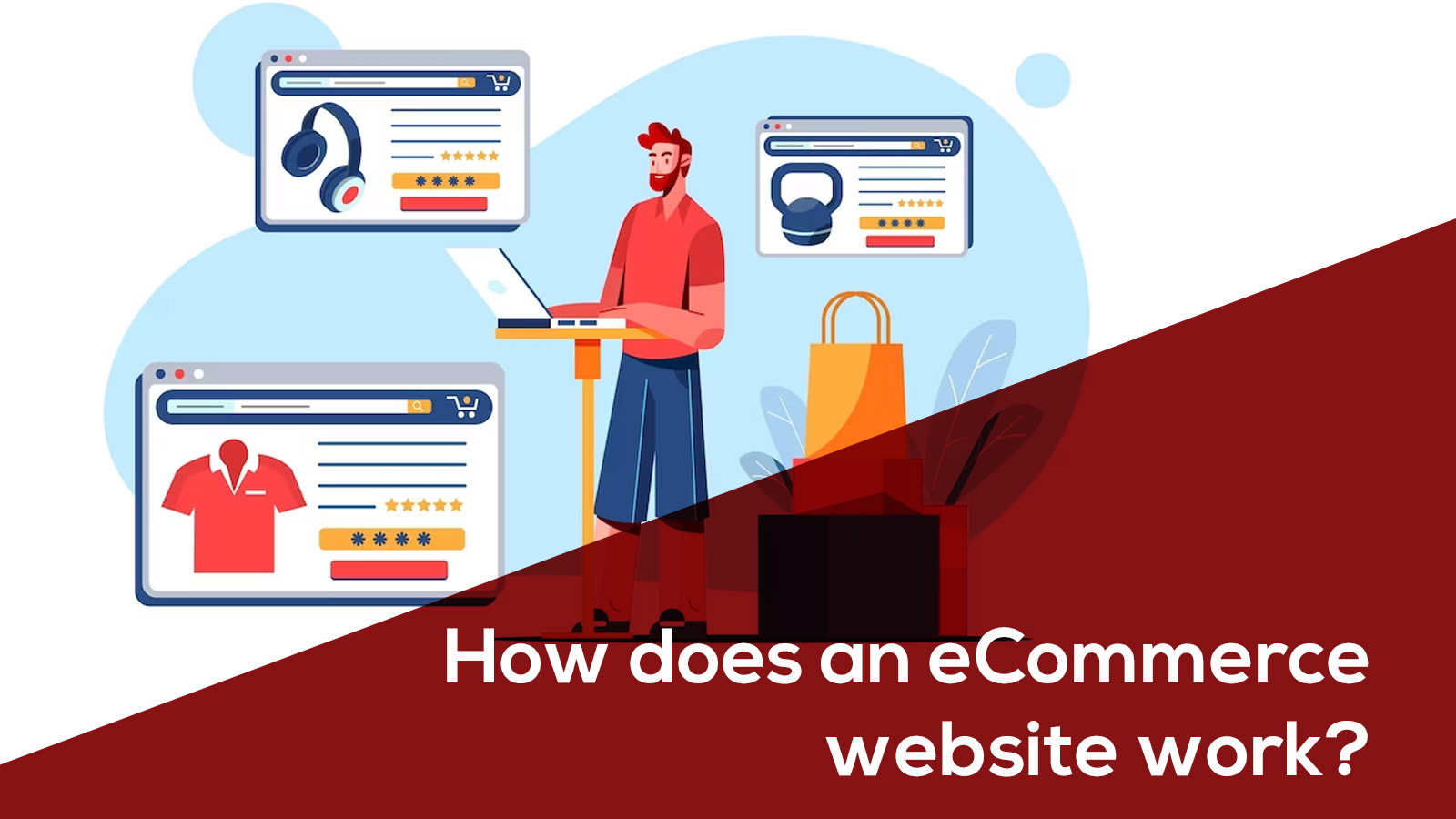Introduction
In our fast-paced digital age, the convenience of shopping has gone beyond traditional brick-and-mortar stores. The rise of eCommerce has transformed the way we buy and sell goods, making shopping a seamless and accessible experience for everyone.
In this blog post, we’ll look at how eCommerce websites work, unraveling the technology behind the screens.
The Storefront
Imagine an eCommerce website as a digital shopping mall where products are showcased – this is what we call the storefront. The storefront is the first thing you encounter when you visit an online store. It’s a digital window display, complete with vibrant images, catchy descriptions, and user-friendly navigation. Think of it as strolling through your favorite shopping district from the comfort of your home.
Product Listings and Descriptions
Each product on an eCommerce website has its own space, much like shelves in a physical store. Product listings provide essential information like price, features, and availability. Descriptions are your shopping assistant, guiding you through the details of the product. These virtual shelves are meticulously organized to make your browsing experience efficient and enjoyable.
Shopping Cart
As you browse and find products you want to purchase, you add them to your virtual cart. It keeps track of your selected items until you’re ready to proceed to checkout. It’s like having a personal shopper tailoring your selections until you’re ready to make a final decision.
Checkout Process
Now, let’s talk about the magic that happens when you decide to make a purchase. The checkout process is the digital equivalent of going to the cashier. Here, you provide your shipping address, payment information, and any necessary details. Encryption technology ensures the security of your sensitive information, much like a secure vault protecting your valuables.
Payment Gateway
Once you’ve filled your virtual cart and entered your details, it’s time to pay. The payment gateway is the technology that facilitates transactions, allowing you to use various payment methods like credit cards, digital wallets, or other online payment options. It’s the financial checkpoint, ensuring that your money reaches the right hands securely.
Order Fulfillment
Congratulations! You’ve successfully made a purchase. Now, the eCommerce machinery kicks into high gear for order fulfillment. Warehouses and distribution centers play a crucial role here. Products are picked, packed, and shipped to your doorstep. It’s a symphony of logistics ensuring that what you selected online arrives safely in your hands.
Customer Reviews and Feedback
Just like word-of-mouth recommendations in traditional shopping, eCommerce platforms leverage customer reviews and feedback. These testimonials provide insights into the product’s quality and the overall shopping experience. It’s a digital community sharing their thoughts to help others make informed decisions.
Conclusion
eCommerce websites are like well-orchestrated digital marketplaces, blending technology and convenience seamlessly. The virtual storefronts, shopping carts, secure checkouts, and efficient order fulfillment processes work together to bring the joy of shopping to your fingertips. Understanding the inner workings of eCommerce demystifies the digital shopping experience, empowering you to navigate this vast online marketplace with confidence. So, next time you click that “Add to Cart” button, remember the intricate dance of technology making your online shopping dreams come true.
Frequently Asked Questions (FAQs)
What is an eCommerce website?
An eCommerce website is an online platform that allows businesses to sell products or services over the internet. It functions as a digital marketplace, providing users with a virtual storefront to browse, select, and purchase items.
How do I navigate an eCommerce website?
Navigation on an eCommerce website is usually straightforward. Use the menu bar or search feature to find specific products. Clicking on product images or descriptions will take you to detailed product pages where you can learn more and make a purchase.
What is the purpose of a shopping cart?
A shopping cart is like a virtual basket where you collect items you wish to purchase. It allows you to review your selections, make changes, and proceed to checkout when you’re ready to complete your order.
Is my personal information safe during online shopping?
Yes, eCommerce websites use encryption technology to secure your personal and financial information. Look for “https://” in the website URL and padlock symbols to ensure a secure connection.
How does the checkout process work?
The checkout process involves providing your shipping address, selecting a payment method, and reviewing your order before confirming the purchase. It’s the final step before your selected items are prepared for shipment.
What is a payment gateway, and why is it important?
A payment gateway is a technology that facilitates secure online transactions. It ensures that your payment information is processed safely, allowing you to use credit cards, digital wallets, or other payment methods.
How are products shipped after purchase?
After you make a purchase, the eCommerce platform initiates order fulfillment. Warehouses and distribution centers pick, pack, and ship the products to your provided shipping address.
Can I trust online reviews on eCommerce websites?
Customer reviews and feedback are valuable sources of information. While individual experiences may vary, reviews generally provide insights into product quality and the overall shopping experience, helping you make informed decisions.
Are there any hidden fees in online shopping?
Transparent eCommerce platforms display product prices, shipping costs, and any applicable taxes during the checkout process. Read product descriptions and check the final order summary to avoid surprises.
How can I track my order after purchase?
Most eCommerce websites provide order tracking features. You’ll receive a confirmation email with a tracking number once your order is shipped. Use this number on the carrier’s website to monitor the delivery status of your package.








